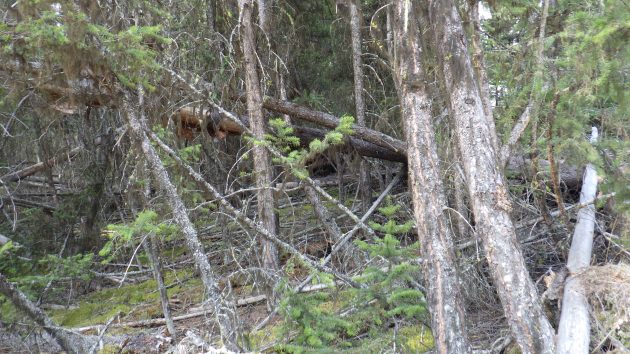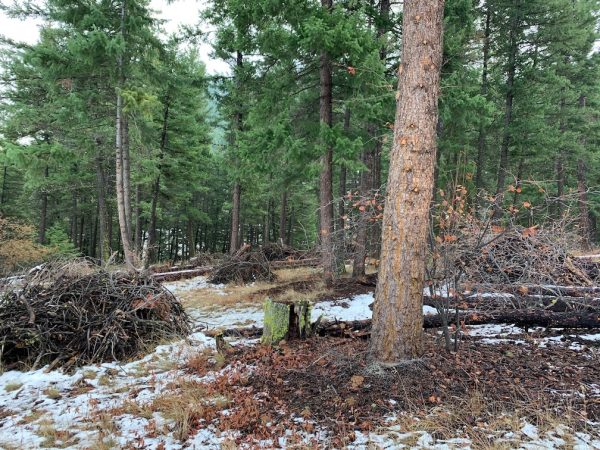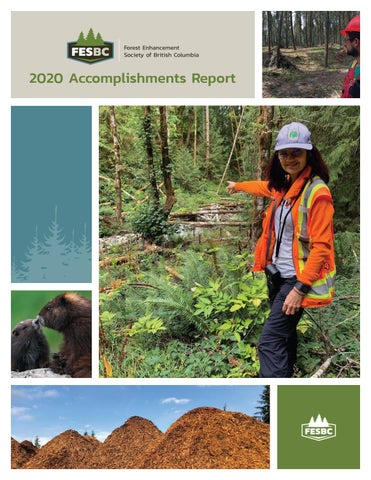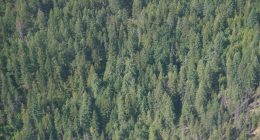With the support of close to $250,000 in funding from the Forest Enhancement Society of BC (FESBC), the Lower Nicola Indian Band (LNIB) removed dangerous trees and reduced wildfire risk at two locations bordering Merritt, B.C. and the LNIB Reserve Lands.
Teams from Shulus Forest Enterprises, a company owned 100 per cent by the LNIB, did all the manual treatments of the sites, including tree pruning, spacing, falling, bucking, piling, and burning, covering about 20 hectares at Lindley Creek and 11 hectares at Fox Farm.
“Spacing of trees to reduce crown closure, pruning to remove ladder fuels to reduce the risk of crown fires, and reducing the amount and continuity of ground fuels will all contribute to reducing wildfire risk, and allow wildfire crews to respond faster,” said Bruce Morrow, a consultant who submitted the application for funding to FESBC on behalf of LNIB. He noted that the project was important because forest fuel treatments will make the area safer for wildfire suppression crews accessing the area in the event of a wildfire. .
The Fox Farm community is located halfway up a steep hillside. The forested area below has been subject to wildfire suppression for over 60 years, resulting in a significant accumulation of dead and downed fuels.

Fox Farm pre-treatment.
“About 40 per cent of the trees were dead standing or lying on the ground ready to burn, creating a high fire hazard for a one-way in, one-way out community,” said Morrow. “We created a situation where hopefully a fire in the area will now move along the ground instead of through the crown. This will make it easier to fight and reduce the risk of structure loss from ember spotting onto the nearby houses from a crown fire.”
Don Gossoo, general manager, Lower Nicola Indian Band Development Corporation (LNIBDC) said the crews employed an average of six people from the community who are trained in the use of hand tools for this type of forestry work.
“The work at the Fox Farm area was done downslope of several large properties adjacent to the Coquihalla Highway, where someone could toss out a lit cigarette. The residents there were happy to see the work done,” said Gossoo.
“Lindley Creek is a corridor from the forest down to the valley where there are more houses,” noted Morrow. “The local winds and topography create a funnel in the Lindley Creek drainage, which can push wildfires downslope toward the homes at the bottom of the treatment area.”
Similar work being done in the area on reserve land and adjacent Crown land is being funded through the Community Resiliency Investment Program and the Cascades Resource District. Morrow noted the project is a great example of collaboration and cooperation in recognizing an issue and working together to protect the community.

Manual treatment fuel piles remaining to be burned. The piles are an accumulation of materials resulting from manual pruning, thinning, and gathering up of existing forest floor fuels. Photo: FESBC.
“We are leaving behind a much happier forest ecosystem. Dry belt trees compete for moisture and nutrients and the trees there were competing for these and weakening each other. The trees left behind are healthier and more resilient to drought, pests, and weather because there’s less competition.”
Gossoo described it as taking a stagnant coniferous jungle and turning it into parkland, adding nutrients, sunlight, and moisture to the stand. “This type of project provides socioeconomic benefits to the community through employment opportunities, and an environmental benefit in improving overall forest health.”
LNIB chief Stu Jackson said projects like this one have multiple benefits to the community. “They provide employment opportunities, improve safety, and help support healthy forests. We look forward to more partnership opportunities like this which enhance communities overall.”
Gord Pratt, FESBC operations manager, highlighted the importance of completing this work in support of addressing high-risk areas identified by Merritt’s Community Wildfire Protection Plan and the BC Wildfire Service.
“This is a multi-benefit proposal to the community, the forest, and the area as a whole,” said Pratt. “This project aligns with FESBC purposes, provides employment, and is exactly what we want to support in terms of rural communities working to implement wildfire risk reduction projects.”
The project also had the full support of the local Resource District and BC Wildfire Service.
Lindley Creek is located south of the Nicola River, south of Lower Nicola; and Fox Farm is located on the north side of the Coquihalla highway just east of Merritt on Fox Farm Road.


